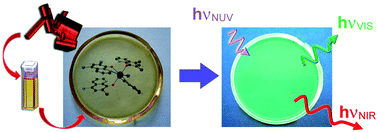Silica sol–gel glasses incorporating dual-luminescent Yb quinolinolato complex: processing, emission and photosensitising properties of the ‘antenna’ ligand†‡
Abstract
The [Yb(5,7ClQ)2(H5,7ClQ)2Cl] (1) complex, that exhibits dual-luminescence in the visible (

- This article is part of the themed collection: Dalton Discussion 13: Inorganic photophysics and photochemistry –Fundamentals and applications

 Please wait while we load your content...
Please wait while we load your content...